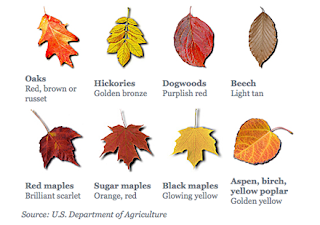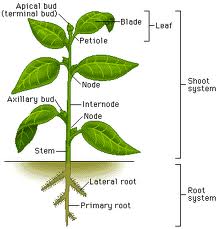Kids should learn what plants they can find where they live. There are many projects to encourage the kids learning and getting these skills at school.
A very nice project is called BudBurst. The PDF on how to follow the project can be found here.
There is more interesting information for working with kids and plants at:
http://www.saps.org.uk/primary/teaching-resources/560
A blog to help you identifying plants and how to plant them and maintain them.
Types of leaves
To be able to identify the trees we have to be able to identify the type of leaves the tree has. That will give us information on which tree we are looking at.
There are simple leaves and compound leaves that can be classified:
Here are some examples of common trees in Ireland
Parts of the plants
To identify and know the plants we see it is important to know the different parts a plant has, as those parts will indicate the family they belong to.
Roots
Roots act like straws absorbing water and minerals from the soil. Tiny root hairs stick out of the root, helping in the absorption. Roots help to anchor the plant in the soil so it does not fall over. Roots also store extra food for future use.
Stems
Stems do many things. They support the plant. They act like the plant's plumbing system, conducting water and nutrients from the roots and food in the form of glucose from the leaves to other plant parts. Stems can be herbaceous like the bendable stem of a daisy or woody like the trunk of an oak tree.
Leaves
Most plants' food is made in their leaves. Leaves are designed to capture sunlight which the plant uses to make food through a process called photosynthesis.
Fruit
Fruit provides a covering for seeds. Fruit can be fleshy like an apple or hard like a nut.
Roots
Roots act like straws absorbing water and minerals from the soil. Tiny root hairs stick out of the root, helping in the absorption. Roots help to anchor the plant in the soil so it does not fall over. Roots also store extra food for future use.
Stems
Stems do many things. They support the plant. They act like the plant's plumbing system, conducting water and nutrients from the roots and food in the form of glucose from the leaves to other plant parts. Stems can be herbaceous like the bendable stem of a daisy or woody like the trunk of an oak tree.
Leaves
Most plants' food is made in their leaves. Leaves are designed to capture sunlight which the plant uses to make food through a process called photosynthesis.
Flowers
Flowers are the reproductive part of most plants. Flowers contain pollen and tiny eggs called ovules. After pollination of the flower and fertilization of the ovule, the ovule develops into a fruit.
Flowers are the reproductive part of most plants. Flowers contain pollen and tiny eggs called ovules. After pollination of the flower and fertilization of the ovule, the ovule develops into a fruit.
Fruit
Fruit provides a covering for seeds. Fruit can be fleshy like an apple or hard like a nut.
Seeds
Seeds contain new plants. Seeds form in fruit.
Seeds contain new plants. Seeds form in fruit.
Subscribe to:
Posts (Atom)




